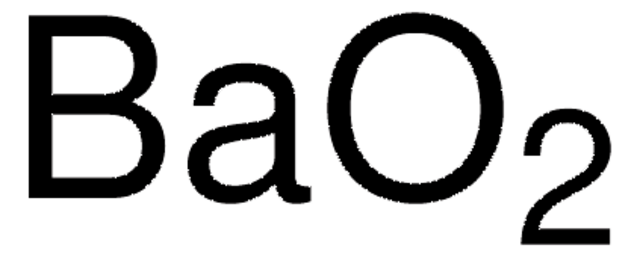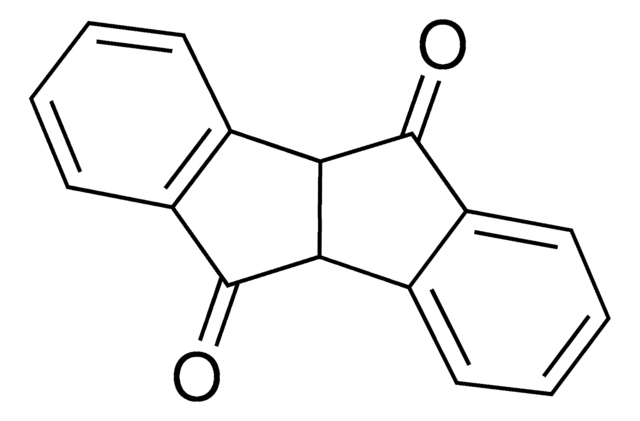推薦產品
等級
certified reference material
TraceCERT®
agency
EPA 8330
特點
standard type calibration
濃度
1000 μg/mL in acetonitrile
技術
HPLC: suitable
gas chromatography (GC): suitable
應用
environmental
形式
single component solution
儲存溫度
2-8°C
InChI
1S/C7H7N3O4/c1-4-6(8)2-5(9(11)12)3-7(4)10(13)14/h2-3H,8H2,1H3
InChI 密鑰
IEEJAAUSLQCGJH-UHFFFAOYSA-N
應用
Refer to the product′s Certificate of Analysis for more information on a suitable instrument technique. Contact Technical Service for further support.
其他說明
This Certified Reference Material (CRM) is produced and certified in accordance with ISO 17034 and ISO/IEC 17025. All information regarding the use of this CRM can be found on the certificate of analysis.
法律資訊
TraceCERT is a registered trademark of Merck KGaA, Darmstadt, Germany
訊號詞
Danger
危險分類
Acute Tox. 4 Dermal - Acute Tox. 4 Inhalation - Acute Tox. 4 Oral - Eye Irrit. 2 - Flam. Liq. 2
儲存類別代碼
3 - Flammable liquids
水污染物質分類(WGK)
WGK 2
閃點(°F)
35.6 °F - closed cup
閃點(°C)
2.0 °C - closed cup
Alethea T Bowen et al.
Chemosphere, 63(1), 58-63 (2005-12-06)
Tubifex tubifex metabolizes 2,4,6-trinitrotoluene (TNT) to 2-amino-4,6-dinitrotoluene (2ADNT) and 4-amino-2,6-dinitrotoluene (4ADNT). Elimination rates of metabolically-generated ADNTs are low compared to ADNTs absorbed directly from water, suggesting that metabolically-generated ADNTs may be bound or sequestered within tissue and therefore less available
L R Krumholz et al.
Journal of industrial microbiology & biotechnology, 18(2-3), 161-169 (1997-02-01)
The transport and fate of pollutants is often governed by both their tendency to sorb as well as their susceptibility to biodegradation. We have evaluated these parameters for 2,4,6-trinitrotoluene (TNT) and several biodegradation products. Slurries of aquifer sediment and groundwater
G S Nyanhongo et al.
Journal of hazardous materials, 165(1-3), 285-290 (2008-11-18)
Pseudomonas putida GG04 and Bacillus SF have been successfully incorporated into an explosive formulation to enhance biotransformation of TNT residues and/or explosives which fail to detonate due to technical faults. The incorporation of the microorganisms into the explosive did not
K Scheibner et al.
Journal of basic microbiology, 38(1), 51-59 (1998-05-09)
Preparations of extracellular manganese peroxidase from the white-rot fungus Nematoloma frowardii and the litter decaying fungus Stropharia rugosoannulata converted rapidly the main intermediates of the explosive 2,4,-trinitrotoluene--the aminonitrotoluenes. In a cell-free system, 2-amino-4,6-dinitrotoluene, 4-amino-2,6-dinitrotoluene and 2,6-diamino-4-nitrotoluene were degraded without formation
J L Martin et al.
Canadian journal of microbiology, 43(5), 447-455 (1997-05-01)
Past disposal of wastewaters containing 2,4,6-trinitrotoluene (TNT) at the former Nebraska Ordnance Plant has resulted in numerous acres of TNT-contaminated soil. Examining the microbial population of these soils revealed several TNT-tolerant Pseudomonas spp. We selected one species, P. savastanoi, to
我們的科學家團隊在所有研究領域都有豐富的經驗,包括生命科學、材料科學、化學合成、色譜、分析等.
聯絡技術服務![2,4-双[4-(N,N-二苯氨基)-2,6-二羟基苯基]方酸 98%](/deepweb/assets/sigmaaldrich/product/structures/303/054/d8b9c845-3623-4f5a-8a30-ab6731034171/640/d8b9c845-3623-4f5a-8a30-ab6731034171.png)










